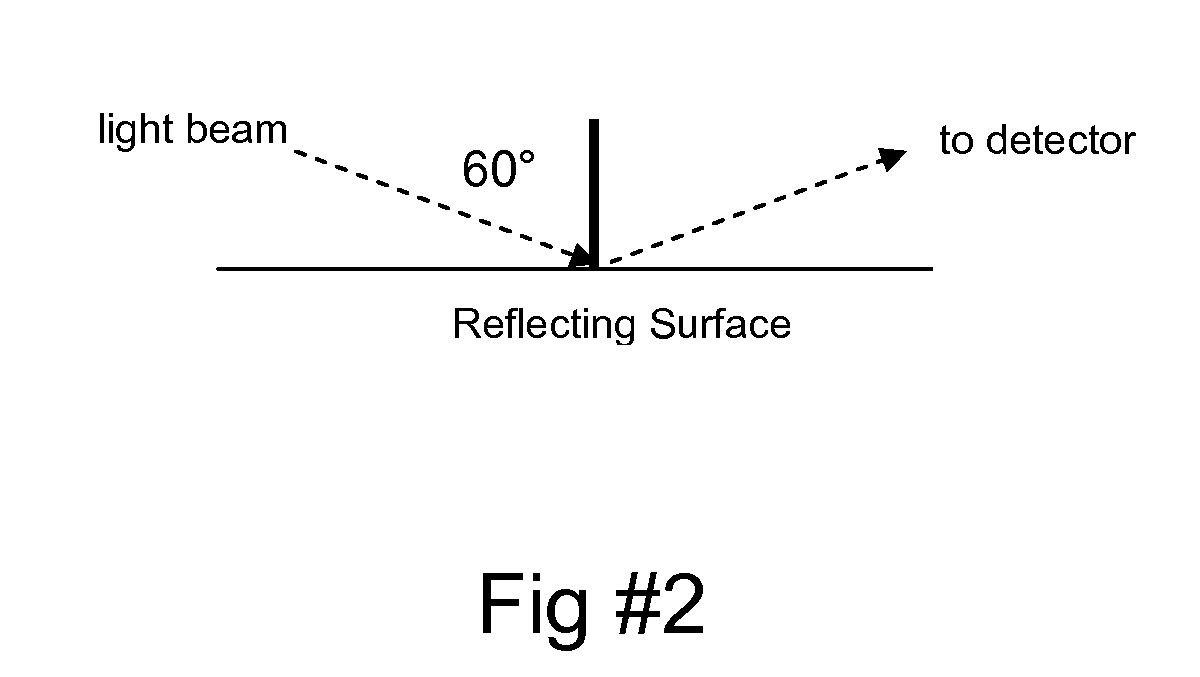Method for applying and curing by UV radiation a sealant system onto natural stone tiles to provide permanent sealing, protection, abrasion resistance, stain and mold resistance
- Summary
- Abstract
- Description
- Claims
- Application Information
AI Technical Summary
Benefits of technology
Problems solved by technology
Method used
Image
Examples
example 1
[0053]In some of the following examples of this invention natural stone tiles consisting of various sizes such as four inch by four inch by ⅜ inch thick specimens of assorted tumbled marble, tumbled travertine, and tumbled limestone were placed on a moving belt at 10 ft per minute and were subjected to an air knife to remove any loose particles, milling dust and other debris. On this belt the tiles were passed under a bank of infrared lamps set at approximately 600° F. to provide radiant heating such that the tile surface temperature was raised ten to fifteen degrees above ambient to achieve approximately 35° to 40° C. surface temperature as determined by a handheld IR temperature sensor.
[0054]After this conditioning step the tiles were sprayed with coatings described further below except where noted otherwise.
[0055]In one embodiment of this invention a single UV-curable sealant composition was tested with and without the presence of 5% by weight beta-carboxyethyl acrylate monomer. ...
example 2
[0073]The following experiment shows the dependency of relationship of the cure of the base (primer) sealer in air when exposed to UVA emitting fluorescent bulbs. For the dry film thickness of about 1 mil (0.001 inch), which is in the range desired for the commercial applications of primer sealer, the weight fraction of material cured (starting at the bottommost portions of the applied sealer) is about 60%. That is, after removing the liquid uppermost uncured sealer after UV exposure about 60% of the sealer remains as fully cured material. There are numerous variables that can affect this result though. The topmost 40% remains in a state of partial cure and is suitable for application of the top coat (sealer) as is described elsewhere in this application.
[0074]Experimental Details: Drawdowns of primer sealer formulation were made at variable wet film thicknesses onto glass plate using a Bird type applicator, as is known to one of skill in the art. (A drawdown is the action of applyi...
PUM
| Property | Measurement | Unit |
|---|---|---|
| Temperature | aaaaa | aaaaa |
| Temperature | aaaaa | aaaaa |
| Temperature | aaaaa | aaaaa |
Abstract
Description
Claims
Application Information
 Login to View More
Login to View More - R&D
- Intellectual Property
- Life Sciences
- Materials
- Tech Scout
- Unparalleled Data Quality
- Higher Quality Content
- 60% Fewer Hallucinations
Browse by: Latest US Patents, China's latest patents, Technical Efficacy Thesaurus, Application Domain, Technology Topic, Popular Technical Reports.
© 2025 PatSnap. All rights reserved.Legal|Privacy policy|Modern Slavery Act Transparency Statement|Sitemap|About US| Contact US: help@patsnap.com



